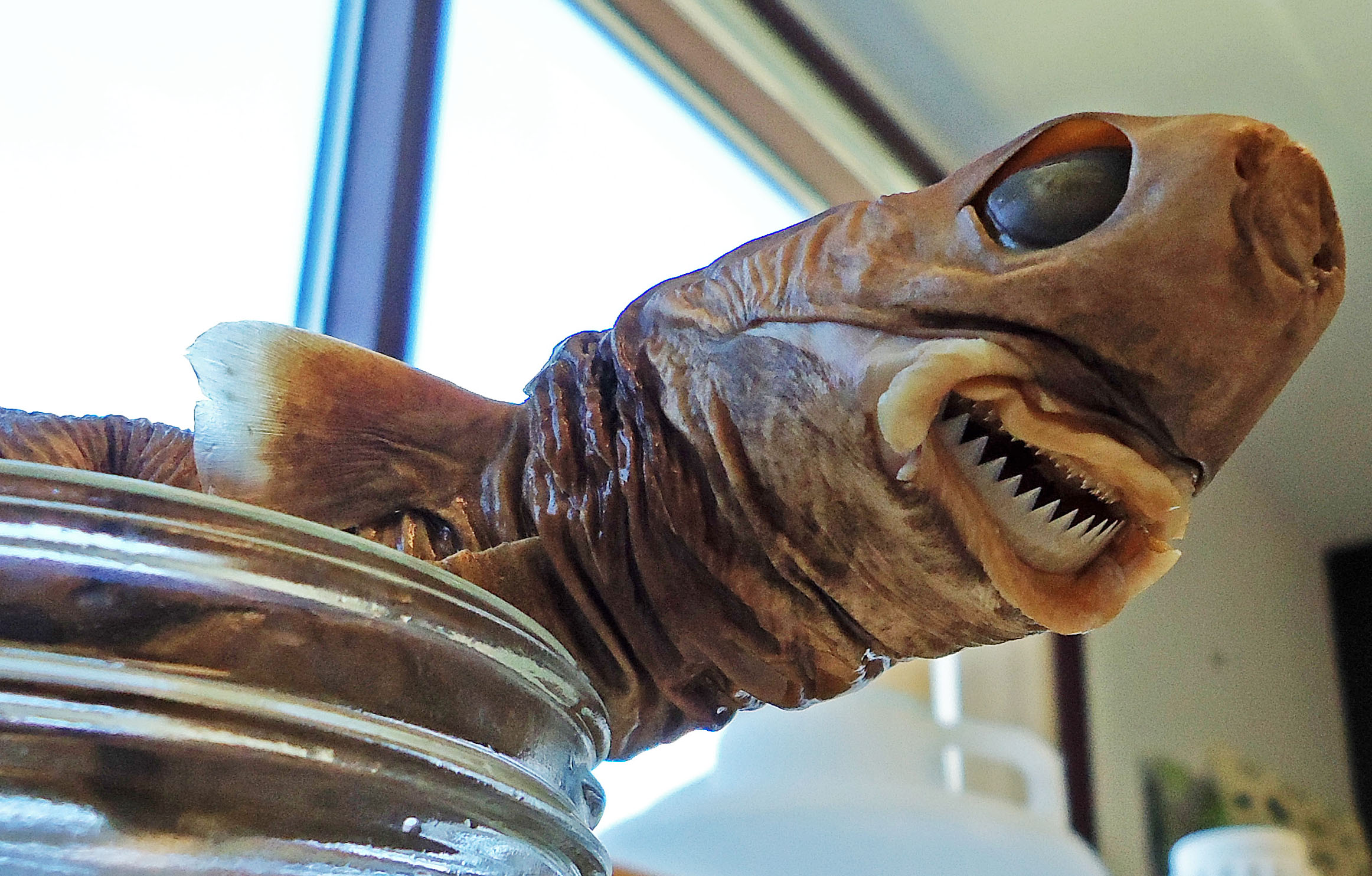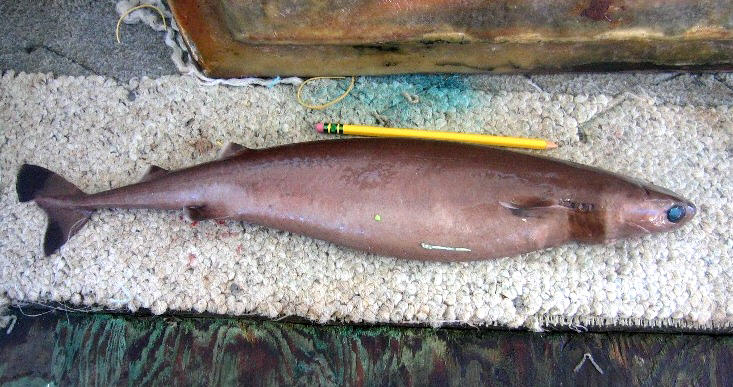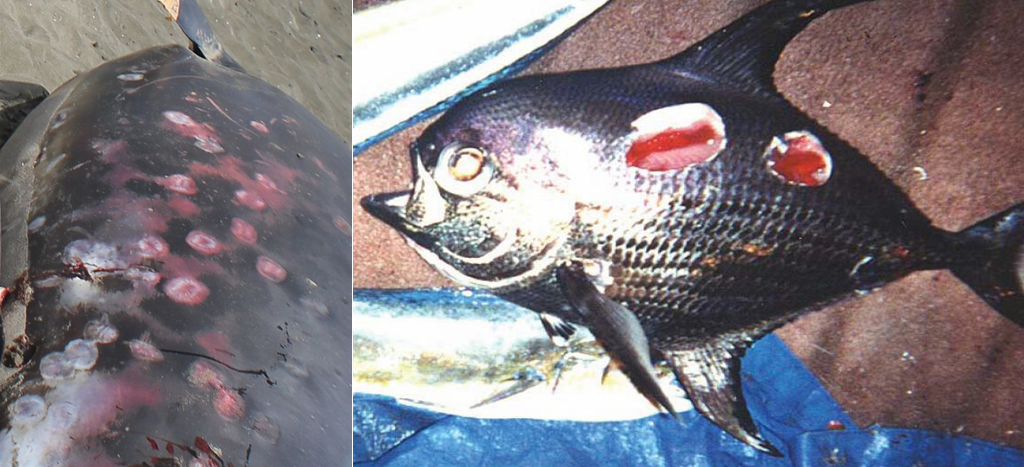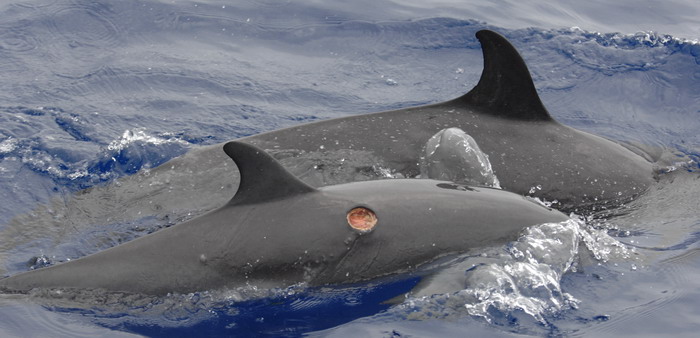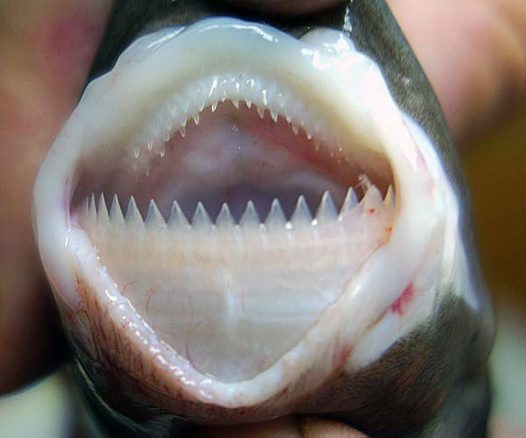The Cookiecutter Shark: Small, Weak & Deadly
The cookiecutter shark (Isistius brasiliensis) is one of the less impressively sized members of the shark family. They generally don’t get much over 50 cm long and have relatively thin and weak bodies. The cookiecutter shark’s size belies its go-getter attitude though. These chaps will have a go at anything of any size that comes into their path.
Cookiecutter sharks have small fins and weak muscles and spend most of their time a couple of miles below the surface of the sea floating in the water column, they probably rely on stealth rather than speed to catch lunch. Their name derives from the circular chunks of flesh that they scoop from their victims. These tell-tale circular bite marks have been found on animals of all sizes, from whales down to the occasional unlucky human.
Humans don’t integrate with the cookiecutter shark too often as they favour the deepest parts of the ocean and only rise towards the surface at dusk; to be quite frank, if you’re mucking about in the open ocean at silly depths after dark you’re asking for trouble any way.
Thankfully for the cookiecutter it’s not of any interest to humans so it’s not on the endangered list. It isn’t particularly susceptible to fisheries and has a wide distribution throughout all of the world’s warmer oceans (particularly in the vicinity of islands).
The plug shaped wounds that these sharks leave on their prey puzzled early zoologists. Some wondered whether the culprit might be lampreys, a type of bacteria or a parasite. Early Samoans believed that the tuna left little chunks of their bodies in the bay as a sacrifice to Tautunu, the community chief. Everet Jones of the U.S. Bureau of Commercial Fisheries finally discovered the cookiecutter shark in 1971, although they originally referred to it as the cigar shark or demon whale-biter (they should have kept that name I reckon).
Virtually all the spinner dolphins studied off the coast of Hawaii bare circular cookiecutter scars, so they’re obviously pretty amazing at sneaking up on animals many times bigger and much, much faster than them. Some whales have washed ashore with literally hundreds of bite wounds covering their bodies. Cookiecutters appear to travel in schools sometimes and I can imagine they would be a formidable force against any size of predator.
A couple of things are pretty strange about these cookiecutter psychos, other than their ferocity. Firstly they are bioluminescent and have green glowing photophores on their bellies; they’re not the only shark to glow but their glow is the strongest. Many fish use this type of lighting to hide in the open ocean, it helps them blend in with the light that drifts dully through the ocean from above.
The cookiecutter shark’s underside is almost totally covered in photophores, except for a small band around its neck. The reasons for this gap aren’t clear, but one theory is intriguing. Some believe that the dark band on the fish’s underside may be to mimic the shape of a smaller fish to tempt in would-be predators. If this is the case it would be the only known example of a lack of photophores being used as a lure rather than the photophores themselves.
The second strange characteristic of the cookiecutter shark is that they have a relatively small mouth surrounded by fleshy suctorial lips. These suctorial lips grab on to the prey whilst it retracts its tongue to create suction, this allows the sharks to lock onto their target whilst their ample sets of teeth get to work doing some cutting. The initial forward motion and the movement of the prey as it tries to free itself assist in the chopping procedure.
Cookiecutter sharks have at least 30 rows of teeth in the upper jaw and more than 25 in the lower. The teeth vary between the top and bottom jaws: the upper ones are small, narrow, and upright, tapering to a single, smooth-edged cusp. The lower teeth are also smooth-edged, but much larger, broader, and knife-like, with their bases interlocking to form a single saw-like cutting edge.
These efficient teeth have even caused trouble for the Royal Navy who at first feared they were under attack from a new type of weapon. During the 1970s, several U.S. Navy submarines were forced back to base to repair damage caused by cookiecutter shark bites. The sharks were having a go at the neoprene boots of their sonar domes, which caused the sound-transmitting oil inside to leak and impaired their navigation.
In the 1980s, some thirty U.S. Navy submarines were damaged by cookiecutter shark bites, mostly to the rubber-sheathed electric cable leading to the sounding probe used to ensure safety when surfacing in shipping zones. Nowadays a fibreglass coating is added and the sharks can have their fun no more.
All in all they’re a pretty fearsome beast with some intriguing traits. I think they might even be stranger than the winghead shark and the thresher shark. I’m not in a rush to go swimming with a school of them though.

